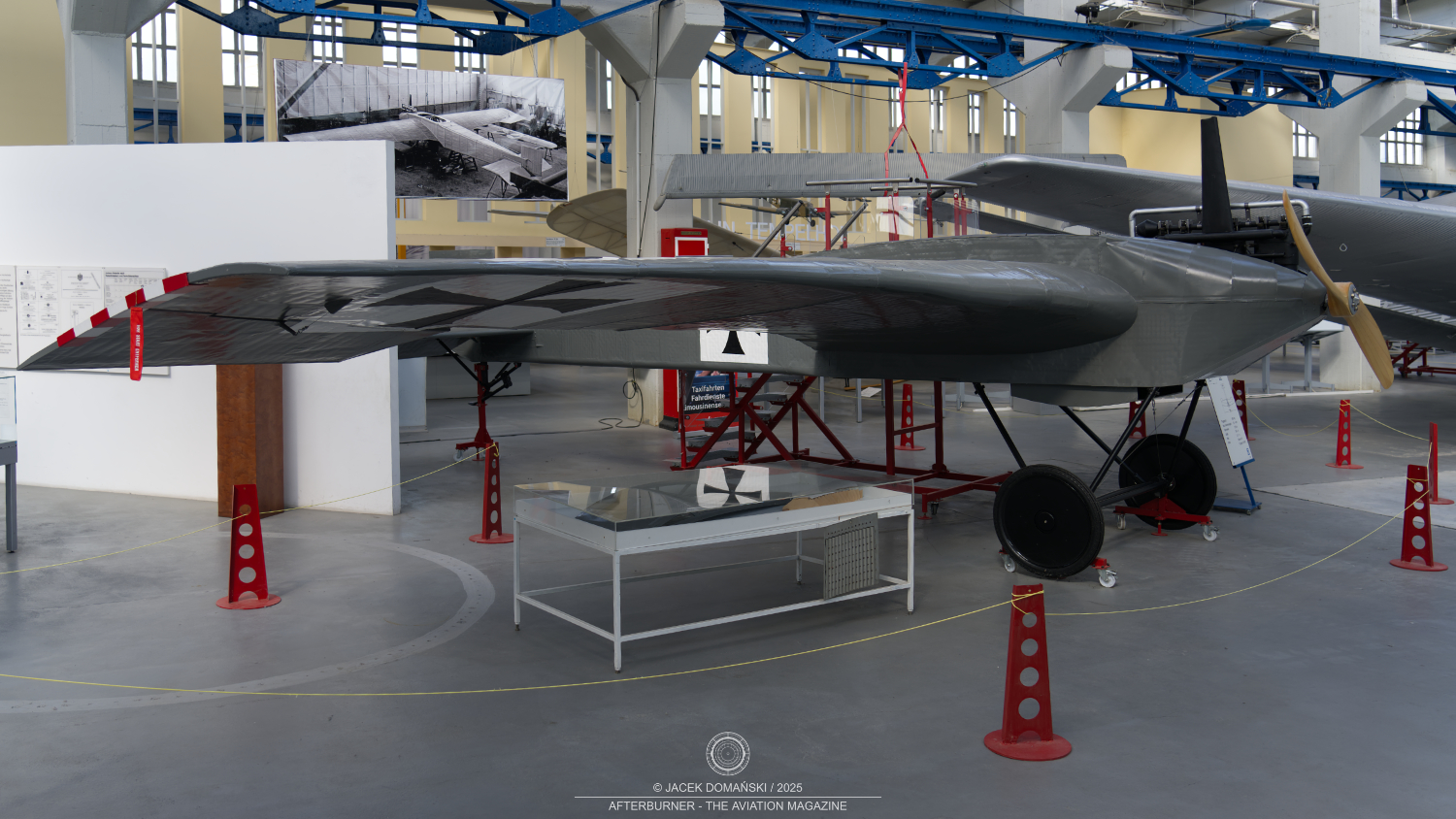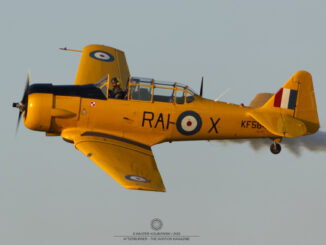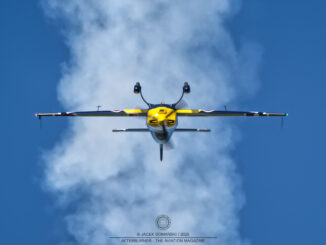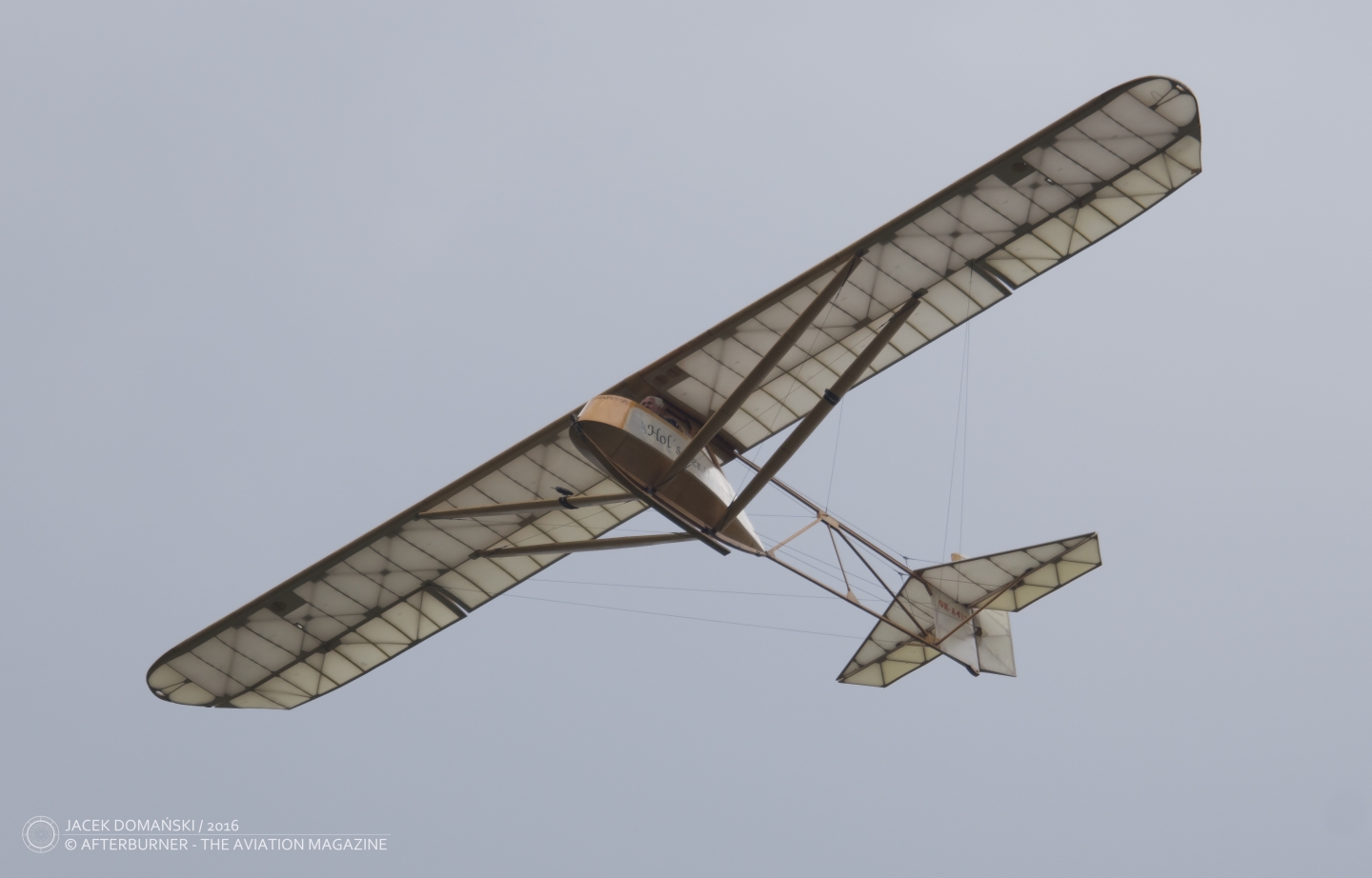 Junkers J 1 (full-scale replica), exhibited at Technikmuseum “Hugo Junkers” in Dessau, August 2025.
Junkers J 1 (full-scale replica), exhibited at Technikmuseum “Hugo Junkers” in Dessau, August 2025.
Hugo Junkers was one of the best-known German inventors of the early 20th century. His early career was related to mechanical engineering, electrodynamics and thermodynamics. In 1895, Junkers established a company named Junkers & Co., which soon became renowned for its calorimeters, gas stoves and fan heaters, as well as heating and water-heating solutions for households.
In 1908, inspired by the German aviation pioneer and aeronautical engineer Hans Reissner, Hugo Junkers began to work on aerodynamics and aircraft construction. Two years later, the German industrialist successfully patented his first aviation development – a thick-profile, cantilever, unbraced wing. When Reissner started with building his own aeroplane – later known as the Reissner Canard – it was Junkers who developed corrugated iron wings for the aircraft and manufactured them at his factory in Dessau.
Hugo Junkers quickly became a renowned aviation visionary, creating several pioneering concepts of all-metal aircraft and flying wings. Regrettably, his progress was halted by the outbreak of the Great War. The talented engineer was not only compelled by the German authorities to concentrate on military aircraft development but also forced to merge his aviation-focused company with Fokker Flugzeugwerke mbH to form Junkers-Fokker-Werke AG.
At the outbreak of the First World War, Junkers devoted his efforts to creating a new, all-metal aircraft, developed as a private venture. Designated Junkers J 1 by the company, the aeroplane was a single-seat, mid-wing monoplane powered by a single 120 hp Mercedes D.II water-cooled, six-cylinder piston engine. The entirely metal structure, incorporating sheet and corrugated steel panels, made the J 1 unique and ahead of its time.
On 12th December 1915, the J 1 successfully completed its maiden flight, reaching an altitude of three metres and officially becoming the first all-metal aircraft in the world. Further evaluation flights, carried out in January of the following year, saw the aeroplane reach an altitude of 300 metres and a top speed of 170 kph.
However, the test flights revealed a few design flaws in the J 1 concept. The aircraft was significantly underpowered, and its sluggish performance soon earned it the nickname Blechesel (“sheet-metal donkey”). In addition, the all-metal structure suffered from several teething problems, typical of any new design.
As a result, the German aviation authorities decided to stop any further evaluating of the J 1. Instead, they tasked Junkers with developing a new aircraft – a single-seat, all-metal fighter known as the Junkers J 2.
On 11th July 1916, the J 2 made its maiden flight. However, it was soon found to be too heavy to compete with conventional fighter aircraft and never progressed beyond the prototype stage. In the era of lightweight, wooden aeroplanes covered with fabric and braced with wires, there was no place for heavy, cumbersome iron fighters. Their time was still to come, with the development of light metal alloys and more powerful engines.
According to available information, the Junkers J 1did not fly again after the aforementioned test flights in January 1916. In the mid-1920s, the aeroplane was handed over to the aviation collection of the Deutsches Museum in Munich, where it was destroyed by an Allied air raid in 1944
In 2015, Technikmuseum “Hugo Junkers” in Dessau, located on the site of the former Junkers industrial complex and dedicated to preserving the heritage of the German aviation pioneer and inventor, decided to build a full-scale replica of the J 1.
The replica took five years and approximately 11,000 work hours to complete. In 2020, to mark the 105th anniversary of its first flight, the Junkers J 1 replica was added to the museum’s collection.
Further information about the life and work of the German aviation pioneer and inventor can be found in our article from 2023 – 3 February – birth (1859) and death (1935) of Hugo Junkers.



